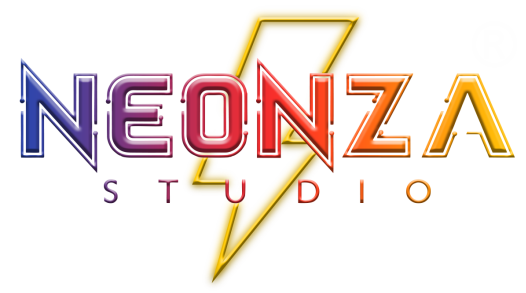Neon lights are a common sight in many cities and towns around the world. These bright and colorful lights have become synonymous with the bustling nightlife and entertainment industry. Neon lights are used for a variety of purposes, from advertising to decoration, and have been around for over a century. In this blog post, we will explore the science behind neon lights and how they work.
What are neon lights?
Neon lights are a type of gas-discharge lamp that uses low-pressure neon gas to produce light. These lamps consist of a long glass tube filled with neon gas and electrodes at each end. When a high voltage is applied to the electrodes, the neon gas inside the tube glows brightly.
How do neon lights work?
The science behind neon lights is relatively simple. When an electric current is applied to the electrodes at each end of the glass tube, the electrons inside the neon gas atoms are excited and jump to a higher energy level. As the electrons return to their original energy level, they release energy in the form of light. This process is known as fluorescence.
The color of the light emitted by neon lights depends on the gas used inside the tube. Neon gas emits a bright red-orange light, while other gases such as argon, krypton, and xenon emit different colors. By combining different gases and coatings on the inside of the tube, a wide range of colors and effects can be created.
History of neon lights
The first neon light was created by French chemist Georges Claude in 1910. Claude discovered that by passing an electric current through a tube filled with neon gas, he could create a bright light. He went on to create the first neon sign, which was displayed at the Paris Motor Show in 1910.
Neon lights quickly became popular for advertising and decoration, and by the 1920s, they were being used in cities around the world. In the United States, neon signs became especially popular during the Prohibition era, as businesses used them to attract customers to their speakeasies.
Advancements in neon lighting technology
While neon lights have been around for over a century, the technology behind them has continued to evolve. In the 1960s, the development of the argon-neon laser led to the creation of neon lasers, which were used in a variety of scientific and industrial applications.
Today, LED lights have become the preferred choice for many businesses and individuals, as they are more energy-efficient and versatile than neon lights. However, neon lights continue to be popular for their unique look and the nostalgic charm they bring to any space.
Applications of neon lights
Neon lights are used in a variety of applications, from advertising to decoration. They are commonly found in bars, restaurants, and nightclubs, where they create a lively and colorful atmosphere. Neon lights are also used for signage, as they are bright and easily visible from a distance.
In recent years, neon lights have become popular for interior design, as they add a unique and retro touch to any space. Neon signs with inspirational quotes and other messages have become popular for home decor, and can be found in a variety of styles and colors.
In conclusion, neon lights are a fascinating example of how science and technology can be used to create beautiful and functional objects. From their humble beginnings in a Paris laboratory over a century ago, neon lights have become a beloved and iconic part of the urban landscape. Whether you love them for their retro charm or their bright and colorful glow, neon lights will continue to capture our imaginations for years to come.

